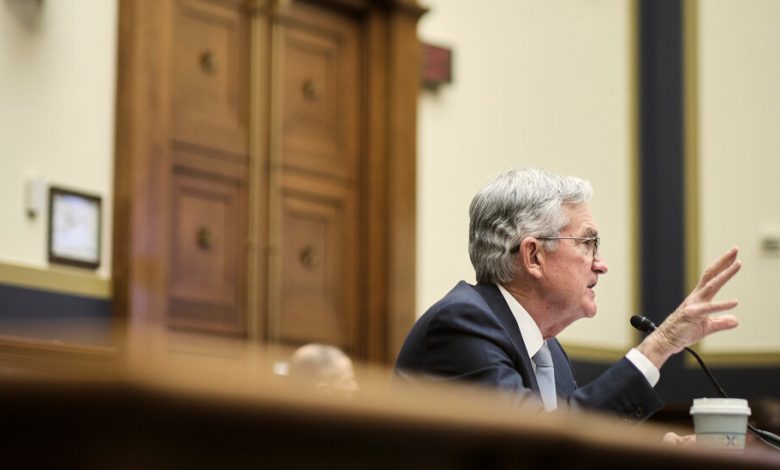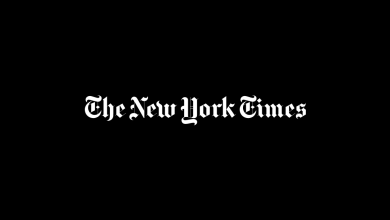What to Watch at the Fed’s First Meeting of 2023

Federal Reserve officials are expected to raise interest rates by a quarter point on Wednesday, the latest step in their battle against rapid inflation. But what they signal about their next moves will be even more important than their actual decision this week.
The Fed will release its January policy statement at 2 p.m. in Washington, after which Jerome H. Powell, the Fed chair, will hold a news conference.
Although the central bank is not releasing fresh economic forecasts at this meeting, Mr. Powell’s remarks should give investors and economists a chance to assess whether officials have changed their thinking since they last met in December. In that meeting, Fed officials projected that they would lift interest rates — which are currently set in a range 4.25 percent to 4.5 percent — to just above 5 percent this year and leave them elevated throughout 2023.
Since that gathering, inflation has shown further signs of slowing, technology companies have announced substantial layoffs and consumer spending has slowed markedly. But for all of those signals of a slowdown, there has also been evidence of sustained economic strength — unemployment remains at a half-century low and wage growth, while moderating, remains unusually rapid.
Here’s what to watch for in the Fed’s statement and news conference.
A Smaller Move
The Fed is likely to raise rates by a quarter point to a range of 4.5 to 4.75 percent at this meeting. That rate increase would be the tiniest move the central bank has made since March; Fed officials lifted borrowing costs by half a point in December, and before that they nudged them up by three-quarters of a percentage point at four straight meetings.
The slowdown is meant to give Fed officials time to see how the economy is doing after a year of aggressive rate increases. Is the economy slowing down as much as expected? Is the job market cooling off? Such factors will determine how high interest rates ultimately need to rise.
Focus on ‘Ongoing’
Fed officials projected in their December economic estimates that they would probably raise interest rates to a range of 5 to 5.25 percent in 2023, implying two more quarter-point rate moves after the expected move on Wednesday.
If officials have only a few more adjustments left, they might call into question a key word in their statement: “ongoing.”
Officials have been predicting that they will make “ongoing increases” in their policy interest rate to slow the economy. But that wording would make less sense if the Fed were to stop raising rates in either March or May, as investors expect. That is why some economists think officials could drop or tweak the phrase this week.
Pulling out the thesaurus is tricky business for the Fed, though: There’s a risk that Wall Street would interpret any shift in the wording to mean that central bankers think they have basically done enough to temper the economy. If investors breathe a sigh of relief, it could make money cheaper and easier to borrow and help the economy to re-accelerate, working at odds to the Fed’s goals.
The Stopping Point
Markets will be on the lookout for any hint at whether the Fed is likely to stick with its expectations and raise rates a few more times before it hits pause. Inflation has been a little bit softer recently: The Fed’s preferred inflation gauge ran at 4.4 percent over the past year, after stripping out volatile food and fuel prices. That is still way faster than the roughly 2 percent that is normal and is the central bank’s goal, but it’s a notable slowdown from 5.4 percent early last summer.
Does the Fed still think that it needs to raise rates a few more times, given that moderation, or will the cooler backdrop make it easier for them to stop lifting borrowing costs sooner? The Fed chair is sure to face questions about it.
Pay Problems
Keep an ear on Mr. Powell’s news conference for any discussion of wage gains — they could end up being a critical driver of policy this year. The Fed chair has previously made clear that he believes it would be hard to wrangle inflation fully with wages growing so quickly.
He explained late last year that “demand for workers far exceeds the supply of available workers, and nominal wages have been growing at a pace well above what would be consistent with 2 percent inflation over time.”
But some of his colleagues have been taking a more benign view of the job and wage situation in recent weeks.
“There are tentative signs that wage growth is moderating,” Lael Brainard, the Fed’s vice chair, said during recent remarks, adding that she sees no sign that prices and wages are driving each other steadily higher.
Others have welcomed a recent slowdown but suggested that they need to see a further slowdown.
“I need to see more evidence of wage moderation to sustainable levels,” Christopher J. Waller, a Fed governor, said in a recent speech.
New Voters
A new crowd of decision makers will have a say about what happens next with Fed policy.
Because this is the first meeting of 2023, the Fed will get new voting members. Four of the central bank’s 12 regional presidents rotate in and out of voting seats each year, while New York’s president and the Fed’s seven governors in Washington hold a constant vote. This year’s newest voting members are Lorie Logan from Dallas, Austan Goolsbee from Chicago, Neel Kashkari from Minneapolis and Patrick Harker from Philadelphia.
Ms. Logan has already suggested that the Fed may be able to stop rate increases and restart them, which could be a theme to watch this year.
Mr. Kashkari has underlined the importance of getting inflation fully under control and suggested he would favor raising rates well above 5 percent, while Mr. Harker has said he expects the Fed to raise rates “a few more times” this year. This is Mr. Goolsbee’s first meeting as a Fed official, so he has yet to make clear his views on monetary policy.




